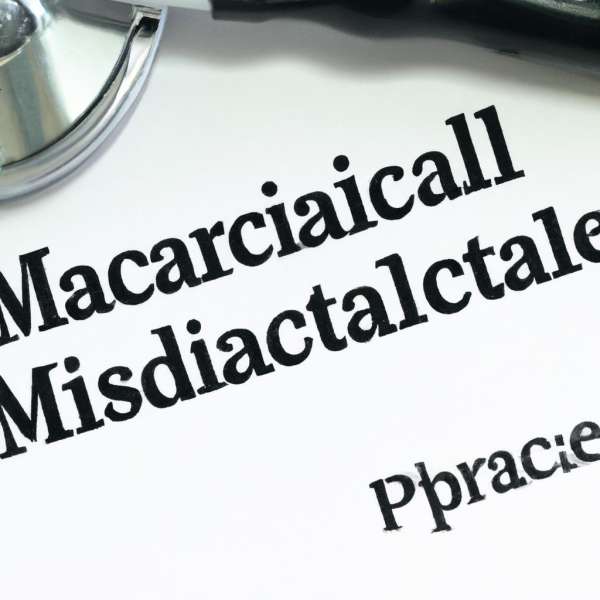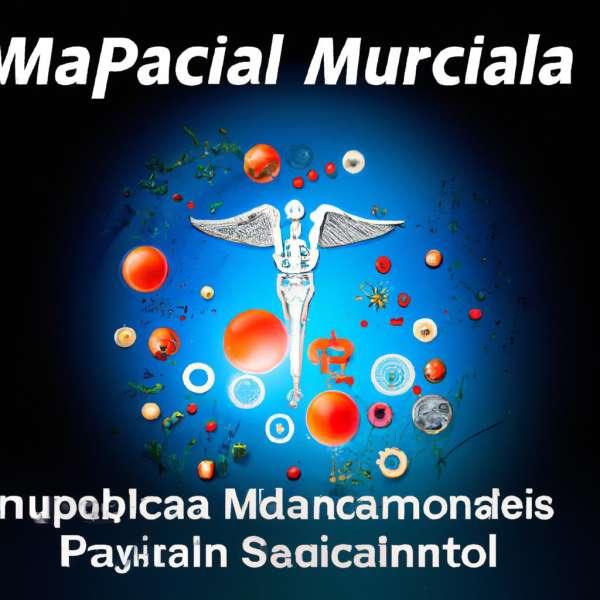Navigating the intricate landscape of healthcare can often feel like a high-stakes balancing act, where the outcomes are critical. Patients place immense trust in medical professionals, expecting competent and reliable care. However, when this trust is compromised, and the consequences are severe, the term “medical malpractice” becomes highly relevant. But what does medical malpractice truly encompass? Understanding medical malpractice claims involves more than just identifying negligence; it requires unraveling a complex web of legal principles, ethical considerations, and personal stories. This article aims to demystify medical malpractice claims by exploring their foundations, the processes involved, and the implications for both patients and healthcare providers. Whether you are a patient seeking clarity or a professional aiming to understand your responsibilities, a deeper insight into medical malpractice claims can pave the way for justice and accountability in healthcare.
Understanding Medical Malpractice: Key Terms and Concepts
Medical malpractice is fundamentally tied to the relationship between healthcare providers and their patients. At its essence, it involves a breach of the duty of care that professionals, such as doctors and nurses, are required to uphold. When their actions—or in some cases, inactions—result in harm to a patient, it can lead to a malpractice claim. Understanding the key terms associated with medical malpractice is crucial for both patients and healthcare providers.
Here are some essential terms to understand:
- Duty of Care: The legal obligation healthcare providers have to maintain a standard of care that ensures the safety and well-being of patients.
- Breach of Duty: Occurs when a healthcare provider fails to meet the established standard of care, resulting in patient injury.
- Causation: Establishes a direct link between the breach of duty and the harm suffered by the patient, proving that the provider’s actions were a substantial factor in causing the injury.
- Damages: Refers to the actual losses incurred by the patient, which can include medical expenses, lost wages, and pain and suffering.
Understanding these terms is crucial for navigating the complex landscape of medical malpractice claims. To further clarify these concepts, we can visualize them through a simple table:
| Term | Definition |
|---|---|
| Duty of Care | Obligation to act in the best interest of the patient. |
| Breach of Duty | Failure to provide appropriate care according to standards. |
| Causation | Establishing harm directly linked to provider’s actions. |
| Damages | Compensation for losses suffered by the patient. |
Grasping these fundamental concepts not only prepares individuals for potential claims but also highlights the ethical considerations inherent in medical practice. By emphasizing the importance of each element, we promote accountability, transparency, and ultimately, patient safety in healthcare.

Navigating the Legal Complexities in Medical Malpractice Cases
Medical malpractice cases can present a labyrinthine challenge for both plaintiffs and defendants. Understanding the intricacies involved is crucial for anyone navigating this sensitive terrain. One must first grasp **the elements of negligence**, which typically include:
- Duty of Care: Establishing that a healthcare provider had a legal obligation to provide care.
- Breach of Duty: Demonstrating that the provider failed to meet the standard of care expected in the medical community.
- Direct Cause: Proving that the breach directly resulted in harm or injury.
- Damages: Showing that the injury caused quantifiable damages, whether economic, physical, or emotional.
Once these foundational elements are set, the legal process further complicates with the necessity of expert testimony. It is often required to substantiate claims regarding the standards of care. Plaintiffs must engage qualified professionals who can attest to how the defendant’s actions deviated from accepted medical practices. This additional layer can bolster or weaken a case depending on the strength of the expert testimony provided.
Moreover, the procedural aspects of filing a claim are laden with strict time limits known as statutes of limitations, which vary by jurisdiction. Failure to adhere to these timelines can result in the dismissal of the case, no matter how compelling the evidence may be. Below is a simplified table outlining some common statutes of limitations in different regions:
| Region | Statute of Limitations |
|---|---|
| California | 1 year from discovery or 3 years from injury |
| New York | 2.5 years from the date of malpractice |
| Texas | 2 years from the occurrence of the injury |
Understanding these legal nuances is essential for anyone involved in a medical malpractice case. By being aware of the elements of negligence, the importance of expert testimony, and the critical timelines, both patients and healthcare providers can better navigate the complexities of the legal process.
In the realm of legal proceedings, patience and thorough preparation are essential. Every phase—from collecting evidence to comprehending legal jargon—demands careful attention. Staying well-informed and consulting with experienced legal professionals are key to successfully navigating the intricacies of medical malpractice claims.

Identifying Common Causes of Malpractice: Patterns and Prevention Strategies
Medical malpractice often stems from recurring issues that highlight the necessity for effective prevention strategies. Recognizing these patterns is vital for healthcare providers and institutions to reduce risks and improve patient safety. Some of the most frequent causes of malpractice include:
- Communication Breakdowns: Miscommunications among medical staff can result in patient care errors.
- Poor Documentation: Inadequate record-keeping can lead to critical information being missed or not communicated.
- Insufficient Training: Lack of proper training or orientation for healthcare workers can lead to treatment errors.
- Improper Delegation: Assigning tasks to unqualified personnel can increase the likelihood of mistakes.
To address these issues, implementing comprehensive prevention strategies is crucial. Effective approaches include:
- Ongoing Training Programs: Continuous professional development can keep healthcare providers updated on best practices.
- Enhanced Communication Systems: Utilizing technology, such as electronic health records, can improve information exchange.
- Standardized Documentation Practices: Establishing uniform processes for record-keeping can ensure that essential information is accurately recorded.
- Collaborative Care Models: Promoting teamwork among healthcare professionals can help distribute responsibilities more effectively.
To illustrate the prevalence of these issues, the following table summarizes recent findings on the leading causes of malpractice claims:
| Cause of Malpractice | Percentage of Claims |
|---|---|
| Communication Breakdown | 30% |
| Medication Errors | 25% |
| Surgical Mistakes | 20% |
| Diagnosis Errors | 15% |
| Other Factors | 10% |
By understanding these common causes and implementing targeted prevention strategies, healthcare professionals can work towards reducing the incidence of medical malpractice and fostering a safer environment for patients.

Empowering Patients: Essential Steps to Take When Considering a Claim
When considering a medical malpractice claim, it is crucial for patients to be proactive throughout the process. The journey begins with meticulous documentation. Collecting and maintaining a comprehensive record of all medical treatments and interactions with healthcare providers can significantly impact the outcome of any potential claim. This includes:
- Medical Records: Request copies of all relevant medical documents, such as treatment notes, test results, and discharge summaries.
- Billing Information: Keep track of invoices and payment records related to medical care.
your treatments.
Following this, it is crucial to obtain legal advice. The intricacies of malpractice law necessitate the expertise of a seasoned attorney who specializes in this area. When consulting with a lawyer, ensure you:
- Provide comprehensive information: Share all your documented evidence and express any concerns about your medical care.
- Inquire thoroughly: Gain clarity on the legal process, the strength of your claim, and associated costs.
- Clarify timelines: Set clear expectations regarding the duration of the legal proceedings.
Additionally, consider joining a support group. Engaging with others who have encountered similar issues can offer emotional support and practical advice. Both online and in-person support groups provide a safe environment for sharing experiences and resources. Furthermore, maintaining open dialogue with your healthcare team about your concerns can promote a more collaborative approach, ensuring your voice is acknowledged and respected.
Moving Forward
In the complex landscape of healthcare, where trust and expertise are paramount, the issue of medical malpractice stands as a significant concern for patients, healthcare providers, and policymakers. Understanding the intricacies of medical malpractice claims goes beyond legal definitions or statistical data; it involves recognizing the profound effects these claims have on individuals and the healthcare system as a whole.
As we fulfill our roles—whether as informed patients, conscientious healthcare providers, or advocates for systemic reform—it is vital to engage in meaningful discussions that highlight the complexities of care and accountability. A deeper comprehension of malpractice not only promotes transparency but also contributes to a healthcare environment where safety, trust, and effectiveness are prioritized.
Ultimately, knowledge is our most powerful tool in this endeavor. By shedding light on the unpredictable nature of medical care and its potential risks, we can collectively work towards ensuring a balance between compassion and accountability, paving the way for a healthier future for everyone. As we embrace this responsibility, let us remain vigilant and empathetic, continually striving for improvements in the care we receive and provide.

Unraveling the Mysteries of Medical Malpractice Claims: What You Need to Know
What is Medical Malpractice?
Medical malpractice occurs when a healthcare professional deviates from the recognized “standard of care” in the treatment of a patient. This deviation must cause injury to the patient.
Common Types of Medical Malpractice
- Misdiagnosis – Incorrect diagnosis that leads to improper treatment.
- Surgical Errors – Mistakes made during surgery, such as operating on the wrong site.
- Medication Errors – Prescribing the wrong medication or dosage.
- Birth Injuries – Harm caused to the mother or baby during childbirth.
- Anesthesia Errors – Mistakes related to the administration of anesthesia.
The Process of Filing a Medical Malpractice Claim
Step 1: Consultation with an Attorney
Begin by consulting an experienced medical malpractice attorney. They will evaluate the merits of your case and guide you through the process.
Step 2: Gathering Evidence
You will need to gather all relevant medical records, witness statements, and other documentation that supports your claim.
Step 3: Filing the Complaint
Once your attorney has reviewed your case, they will file a formal complaint with the court.
Step 4: Discovery Phase
Both sides will exchange evidence and take depositions. This phase can take several months to years.
Step 5: Settlement or Trial
Most cases are settled out of court, but if an agreement cannot be reached, your case will go to trial.
Statute of Limitations in Medical Malpractice Cases
Each state has its own statute of limitations, which is the deadline by which you must file your claim. Typically, this ranges from one to three years from the date of the injury or when the injury was discovered.
Common Mistakes to Avoid in Medical Malpractice Claims
Delaying Legal Action
Waiting too long to file your claim can result in losing your right to seek compensation.
Not Consulting an Experienced Attorney
Medical malpractice cases are complex. Consulting an attorney with a strong background in this area significantly enhances your chances of success.
Inadequate Documentation
Failing to thoroughly document your injuries and the impact they have on your life can weaken your case.
Practical Tips for Strong Medical Malpractice Claims
- Act Quickly – Start the process as soon as you suspect malpractice.
- Maintain Detailed Records – Keep copies of all medical records, receipts, and correspondence.
- Be Honest – Always provide accurate and truthful information to your attorney.
- Seek a Second Opinion – An independent medical evaluation can corroborate your claim.
Case Studies in Medical Malpractice
Examining past cases can provide insight into how various aspects of medical malpractice are handled.
Case Study 1: Misdiagnosis Leading to Severe Complications
In this case, the patient was misdiagnosed with a minor illness, but later discovered they had a serious condition requiring immediate intervention. The delay in proper diagnosis caused severe complications, resulting in a significant settlement.
Case Study 2: Surgical Error and Subsequent Lawsuit
A patient underwent surgery and the surgeon operated on the wrong organ. The error was only noticed post-operation, leading to additional procedures and prolonged recovery. The patient successfully sued for medical malpractice, securing compensation for their suffering.
| Type of Malpractice | Example | Potential Outcome |
|---|---|---|
| Misdiagnosis | Incorrectly diagnosed as having a common cold instead of pneumonia | Award settlement for delayed treatment consequences |
| Medication Error | Prescription of an allergenic drug | Compensation for allergic reaction |
| Surgical Error | Operating on the wrong body part | Payout for corrective surgery and damages |
Benefits of Pursuing a Medical Malpractice Claim
Compensation for Damages
Compensation can cover medical bills, rehabilitation costs, and lost wages due to the injury.
Holding Healthcare Providers Accountable
Pursuing a claim can help ensure that negligent healthcare providers are held responsible for their actions.
First-Hand Experiences: Patient Stories
Jane Doe: Overcoming Surgical Negligence
Jane underwent a routine surgery that went wrong due to a negligent surgeon. Her recovery took months, and she shared her story of pursuing legal action and ultimately winning her case, highlighting the importance of persistence and proper legal support.
John Smith: Victory After a Misdiagnosis
John was initially misdiagnosed, leading to severe health complications. He decided to file a medical malpractice claim, and with the help of a dedicated attorney, he won his case and secured the funds needed for his treatment and recovery.


